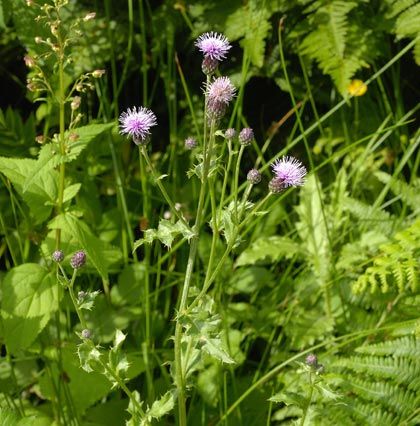A very common creeping perennial, the creeping thistle is usually hairless. The upright stems are spineless and sometimes the leaves are cottony underneath. Flowers are lilac coloured (15-25mm across) in fragrant clusters with darker bracts and are pollinated by a variety of insects. The leaves are pinnately lobed and spiny and the upper leaves clasp the stems. This wildflower reaches 120cm high, flowering from June to September in grassy and waste places. In autumn the fruits are held in a feathery pappus and drift far and wide. The creeping thistle is one of our most troublesome noxious weeds. Roots spread, producing shoots, which grow into new plants. Spear and Marsh Thistles are spread by means of seeds. This native plant belongs to the family Asteraceae
I first identified this plant in Fionnavara Point, Co Clare in 1981 and photographed it at that spot, also in 2007 at Ballyteigue, Co Wexford with a Common Blue butterfly Polyommatus icarus (kindly identified by Michael O'Donnell of Wexford Naturalists Field Club) and the seedheads were photographed on the Military Road in Co Wicklow in 2007.
If you are satisfied you have correctly identified this plant, please submit your sighting to the National Biodiversity Data Centre



